TL;DR, NO! When your schema markup – for machines – overstates and/or misinforms the incomplete content you serve to people and machines, metadata markup does not influence the evaluation of Expertise, Experience, Authoritativeness, or Trustworthiness by either. And when you do serve enriched content to people and machines your semantic markup should represent a machine-readable translation. One that helps machines process that which you should always serve to people, to begin with!
The act of analyzing unstructured content by people is a beneficial task ↦ A method for figuring out how it should be modeled, structured, and composed; the types of things it should contain and what these should be made up of, and relate and refer to. Resulting in data models, data structures, object compositions, named entities, properties/attributes, relations, and references ↦ Substance content should always already contain for people ↦ Satisfying their needs and desires!
Double-E-A-T represents attempts at assessing signals that are important to people ↦ A method for Google to produce search results that are relevant to people, through their SEs (Search Engines), KGs (Knowledge Graphs), and machines. It is not a high score for you to achieve by providing what you think they need and desire. Their SEs, KGs, and machines exist to try to assist people realize their hopes and dreams, and so should you ↦ #peoplefirst!
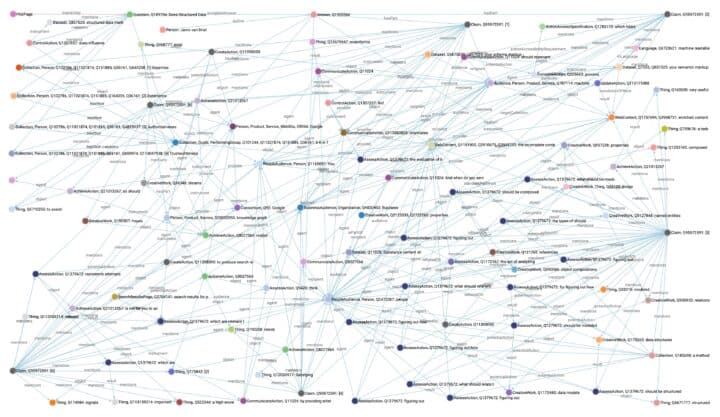
1. P (Prologue), E-E-A-T and its relation with Semantic Annotations
Some time ago I published a #schemaorg #nugget on Twitter, Linkedin, and Mastodon about the same topic, within the context of commercial organizations. A post that represents a combination of concepts, competencies, techniques, and points of view I will lay out to you in this story, though only after I emphasize one important detail of that post nobody asked about.
1.1 H (How) did I find the identifiers of those organizations?
Almost none of the businesses involved mentioned in my social media post show(ed) any corporate/legal/standardized identifiers on their web pages nor in their metadata markup (or at least, not in such a way that I could easily use them to get to know more about them).
Meaning most left me no other option than to scour the internet for their identifiers. Something I consider an enormous no-no regarding the last letter in E-E-A-T.
How are people supposed to Trust you (and your business), if you are hiding or forgoing to mention exactly that information which makes it easier to help build trust?
By not providing us with such information organizations fail to offer us the Transparency we need to be able to establish their Trustworthiness and possibly even derive their Notability, if they were to enable us to get to know them with ease.
Update: At least Klick-Tipp seems to be attentive enough to correct their ways. They owned it and reacted by taking action! A great way to help build and restore trust and get a positive mention because of it.
To the rest of you: Come on folks, time to WAKE UP! Your websites exist to help people, not machines.
1.2 W (Who) am I to <em> such <strong> statements?
Well, chances are you have never heard about me unless you sometimes happen to travel around in the same ‘little’ corner of the web I enjoy traveling around in, The Semantic Web. So before I continue, let me introduce myself to you first.
Hi, I am just Jarno, a person born, raised, and living in Rotterdam. A structured data fanboy with dyslexia, and an interest in semantisc. One with knowledge graphs that, so far, have managed to stay invisible to most.
I am hoping you will let me take you on a journey into a short story about one of my graphs, as a way of showing you how I look at and deal with E-E-A-T while trying to persuade you to trust the claim:
I (sort of) know what I am talking about.
1.3 N (Now) you may ask yourself…
…why would he mention he has dyslexia?
Well, that is because this is a fundamental fact about me that explains why I love the process of annotating information so much:
It helps me with my understanding of content and the types of entities it is about; how to improve and enrich their information as well as the accuracy and precision of statements made about them. As opposed to introducing ambiguity through my typos (typographical errors) and/or misinterpretations. A situation that is beneficial for you, me, and machines. A win-win for all!
1.4 The S (Stage) is set, the curtain raises…
2. E (Expertise), the first abbreviation in E-A-T
The first character of the acronym originally mentioned in Google’s Search Quality Evaluator Guidelines (Nov. 12th, 2015) is probably the cheesiest of its concepts to express within the context of a single web page. As I will try to illustrate by providing you with a simple summary of things I consider myself to have a certain level of expertise in, or – to say it differently – things I consider myself to be somewhat of an expert in.
A method not very different from how many of you have been doing this in the content of your profile pages, though which I built upon (fact: I do not stand alone) by providing:
The full description of what abbreviations and acronyms stand for on screen.
People with different types and/or combinations of disabilities can require different methods for being able to understand what abbreviations and acronyms stand for. And to not be dependent on any 1 particular solution, providing their meaning directly after having mentioned them is the most accessible method of conveying such information,
Hyperlinks to resources describing (abbreviations and acronyms of) expertises and concepts.
Something which allows both people and machines to find more information in case names (and descriptions) provided are not unambiguous and/or not informative enough for them to understand their meaning or relevancy,
Contextual links for the inclusivity of different cultures. By providing links to references describing proverbs and sayings.
Things that often only make sense within your cultural frame of reference. This means that providing links to resources explaining these is a method for being attentive and inclusive towards other people’s culture and their understanding of yours,
Semantic HTML for the accessibility and inclusivity of people (with disabilities).
Helps to ensure that people who use assistive technology, like screen readers, are informed they are dealing with abbreviations/acronyms; as opposed to hearing, reading, or feeling meaningless, strange/unrecognizable ‘words’. While making sure they can participate in any activities that are part/result of content through their input devices,
Descriptive structured data markup knowsAbout statements (about me).
This is an alternative for machines, so they can make sense of things; in those rare cases when the combination of accessible, descriptive, and inclusive natural language, semantic HTML, and relevant and descriptive links still is not enough for them to be able to extrapolate meaning and intent.
Now I have to mention that I have noticed many of you (marketers/SEO specialists) have started participating in a growing negative trend of exclusively expressing your knowledgeability as a Text string and not as a Thing.
While also forgoing to add that same information to the content of those pages about yourselves, which you serve to people…
2.1 T (Trying) to provide “satisfaction” to machines to get their attention, are you now?
Well, then you should know you have wasted your time by adding statements that will end up being ignored by the machines you are hoping to appease, while – most importantly – selling people (your target audience) short because you did not provide them with that same information, thus not satisfying their needs.
It is since the introduction of JSON-LD and the consequential decoupling of web content and its semantic annotations that certain people (within our industries) feel the need to try to play the machines again. As if we are back at the beginning of it all.
When ‘professionals’ were keyword stuffing links, URLs, headings, content, and <meta name="keywords"> elements and/or abusing CSS (Cascading Style Sheets) to add text to a page that had the same color as its background, and then some…
You Starscream! You let yourself be influenced by the wrong leader!
Anybody in one’s/its (let us not forget the machines) right mind, has no desire nor need for any markup that attempts to be more expressive than, or misrepresentative of the content it is supposed to be describing.
Markup is nothing more than a machine-readable translation of statements and facts which, first and foremost, should be present in the presentational layer of a medium itself (an article, a photo, a video, a podcast, etc.) for people to consume, digest, and experience.
No matter what Megatron says, if a medium does not contain such substance, only Decepticons will ‘give a rat’s *** about it’.
2.2 My personal E’s and their semantic annotations
POSH (Plain Old Semantic HTML), Web accessibility, Section 508 (Amendment to the US Rehabilitation Act of 1973), WCAG (Web Content Accessibility Guidelines), Writing for Web accessibility, SEO (Search Engine Optimization), technical SEO (technical Search Engine Optimization), semantic SEO (semantic Search Engine Optimization), RDFa (Resource Description Framework in attributes), Microdata, JSON-LD (JavaScript Object Notation for Linked Data), schema.org, and to a lesser extent but still relevant enough to mention: BI (Business Intelligence) and business analysis.
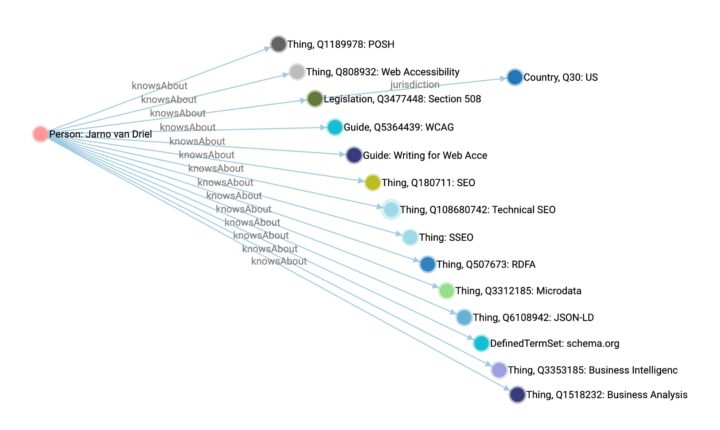
All of which can be somewhat substantiated through the Skill section on my LinkedIn profile. Although I really, really, really hope this does not impress you.
One should always be hesitant to trust that which is easy to manipulate. The main reason why I never bothered to exploit the features LinkedIn offers (nor Freebase in the past), and why my online profiles are not as impressive as they could be.
It is just too easy and therefore of little value to me. I prefer to show just me! As opposed to trying to sell you an over-the-top, stylized, and self-serving piece of fiction about myself – really! Or am I…
3. E (Experience), causing E-A-T to become E-E-A-T
Thank goodness Google eventually also realized ‘expertise’ is just a hollow concept if demonstrable experience can not be provided. And so they revised their Search Quality Evaluator Guidelines (Dec. 15th, 2022) by adding a character (E for Experience) to the acronym.
Now I will spare you the pain of having to read a complete and descriptive outline of all the jobs and positions I have held over 25+ years of online activities, but if you feel the need to, by all means, feel free to read everything my LinkedIn profile mentions if that makes you feel comfortable with any statements I am making here. 🤔
For this part of my story though I will constrain myself to describing those experiences I feel matter for my attempts to convince you to trust:
I have enough relevant experience to substantiate what I state to be my expertise.
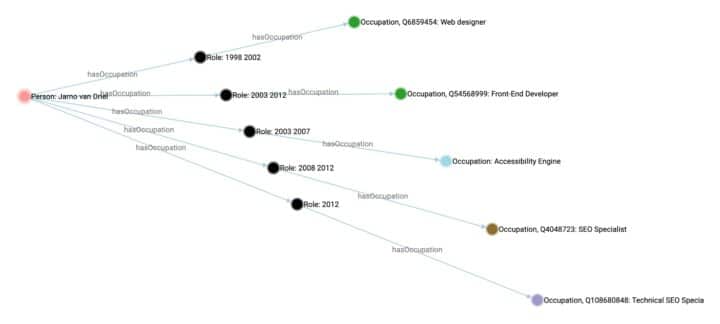
3.1 M (My) personal E’s, putting my money where my mouth is
After having launched my first website I knew the World Wide Web was something I wanted to turn into a career, though I had no clear vision as to what that something should entail. And so, like many others in those years, I became a web designer (1998).
A job that had no official description. People simply perceived you as that geek who was working on that hype called the internet.
3.2 G (Goodbye) Flash, Shockwave, 3D Studio Max and Maya
After 5 years of ‘playing around’, things became more serious when I took on a role as a front-end developer (2003) for a typical early 2000s IT (Information Technology) company. A company that (amongst others) was maintaining the websites of roughly 500 primary schools in The Netherlands, which I had to either design, create, and/or maintain.
Out of the blue, within the same year of starting that job, I suddenly also had to become an accessibility engineer, as the Dutch parliament was going to pass a law that demanded that all websites funded through government subsidies (which elementary school websites were back then) should become accessible for people with disabilities.
Something I discovered is not only fundamental for my reality but also those of others, because I had to connect with many other people with disabilities. People for whom inaccessible websites have a big impact on their quality of life.
3.3 F (Few) years in, I started noticing something interesting
Grade school websites I had worked on began outranking commercial websites for High Traffic Keywords!
Really?? Yes, Really!!!
After having looked into it for some months I concluded that search engines were also suffering from some of the effects of visual and navigational impairments, motor disorder, and even cognitive bias. And that (to quite a high degree) written and technical semantics were helping them out as well.
And so ultimately us. The people searching for things, which, back then, were almost exclusively expressed through HTML, links, and strings. Something that, up to the present day, still yields great results.
3.4 D (Desire) for a new role, new experiences, and discoveries
Which, led to taking on a position at a medium-sized Dutch publisher of both consumer and business magazines, as well as stand-alone websites. A role in which, for the first time in my career, I would be able to apply the things I had learned for a commercial organization that was active both off- and online, while also taking my first steps towards becoming a (freelance) T-shaped SEO specialist (2008).
During my time at that publisher, I was part of a small team consisting of professional (print and digital) designers, journalists, a chief editor, photographers, 1 in-house DevOps, and 1 freelance jQuery specialist.
A team that created a base Drupal theme, for all of their magazines and websites, each of which was customized through sub-themes, upwards to roughly 15-20 different sites, as well as, additionally, some of those of their direct advertisers and business partners.
3.5 M (Machine-readable) linked data – “What you say?!”
When I started encountering publications about embedding semantic metadata in web documents, in Drupal 6, this immediately grabbed my interest. Which was not that strange given my prior experiences with and interests in written and technical semantics.
The starting point for experimenting with this new form of markup (or at least, it was new to me).
One initiative led to another and by the time it was announced Drupal 7 would include this form of markup into its core, the DevOps specialist and I had already prepared a fully new Drupal 7 base theme, as well as sub-themes for all those sites I mentioned.
Themes that included RDFa syntax, which we hoped would make sense, as well as using any ontology we could find, because we had no idea which of those we were supposed to be using (schema.org didn’t exist yet). Themes we released the same day Drupal 7 was released.
3.6 W3 (World Wide Web).org mailing lists, “I can talk with the interweb?”
More or less the thought I had when I ran into this W3 Mailing List post mentioning DIGIFOTO Pro, the largest site I had worked on up until that point in my digital career. A post that mentioned something called schema.org, as well as criticizing our implementation.
And so I subscribed to that mailing list, acting as a lurker because I was too shy to make myself known. I barely understood this stuff and had no clue what I was supposed to ask, let alone daring to expose that fact.
Though given that, back then, it was the only consistent resource about RDFa/Microdata markup we could find, it inspired my colleague and I to swap all the ontologies we had used, for types and properties the schema.org vocabulary described.
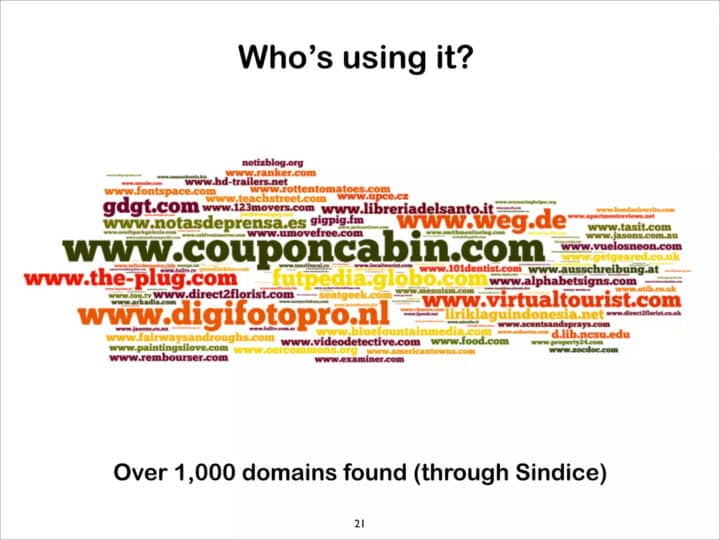
3.7 A (Another) mention, this time championing our work
Then, one day, in 2012, I ran into a slide deck mentioning that same website yet again. A slide deck stating, that according to Sindice (an experimental semantic search engine that no longer exists), that single website was the #2 publisher of RDFa + schema.org semantic triples.
Something I would have loved to have discussed with the slide deck’s creator, as Sindice had not yet indexed all the other websites we had been developing themes for. And if it had done so, before closing down, I am pretty sure we would have shot to the #1 spot for years to come.
4. A (Authoritativeness), time to brag about oneself (nod to Barry Adams)
And to act (out) the character of one of my long-standing inspirators (@badams) for a moment:
Let’s be weal and face a bwutally honest twuth together. Some digital marketing and/or aSSEO specialists can be quite a bunch of self-loving pwofessionals…
There are those of us that tend to be anyfing but shy when it comes to showing off their so-called ffucking ‘pwoof’ of ffucking self-pwoclaimed ‘Aufowitativeness’.
Just a ffucking mention of it immediately makes me think about Ewic Cartman’s: “Wespect my Aufowitah!”.
Back to acting my character.
A type of social behavior I have never been fond of either yet which, from the very start, has been demonstrated over and over again by (changing) groups of very loud and vocal individuals involved in our fields of industry.
But hey, if you can not beat them, join them! After all, I have a point to make by acting as Authority. How else would I convince you I have such a ‘way too obvious’ and ‘impossible to ignore’ thing, right?
4.1 A’s voyages to boldly go where no SEO specialists had gone before, other than…
Aaron Bradley (@aaranged), the one and only proverbial Godfather of semantic search-related crimes, and the one person ultimately responsible for breaking me out – of my lurker zone – so I would finally start participating in the discussions over at the schema.org community. Which I have been doing, since June 2013, and continued to do after it moved over to a new place and new structure, up to this day.
An act that proved to be quite impactful as it caused me to start moving away from being a broad technical SEO specialist (2012), towards becoming one with a focus on a very small and specific niche, semantic markup and its applicability beyond Google’s Rich Results.
4.2 A (Aaron), and his Semantic Search Marketing Community
Together Aaron and I moderated a Google+ group he started. A community in which he focussed on sharing news about new things arriving in marketing land, while I focussed on helping our members with their (and they with mine) structured data markup-related questions and issues, while we were both also active on the schema.org mailing list (as well as some of our other G+ community members).

A means (amongst others) for me to try to become proficient in the matter while learning about it together with like-minded people. Everybody involved was trying to figure out how the heck this stuff was supposed to work and where it was heading. Even the people officially working for schema.org itself, as schema.org – at its core – is a collaborative experiment.
4.3 E (Establishing) authoritativeness through peers
Years of community activities that led to forming lasting relationships with people who might, though probably and already, have been known to you long before discovering me mentioning them:
- Martha van Berkel (@marthavanberkel) and Mark van Berkel (@vberkel) – founders of Schema App,
- Andrea Volpini (@cyberandy) and David Riccitelli (@ziodave) – founders of WordLift,
- Tony McCreath (@TonyMcCreath) – creator of Classy Schema,
- Fred Laurent (@semanticmarker) and Dixon Jones (@Dixon_Jones) – founders of Inlinks,
- Bill Slawski ✝ (@bill_slawski), Teacher of all and Master of patents – may he rest in peace,
- David Amerland (@DavidAmerland) – writer and inspirator,
- Teodora Petkova (@TheodoraPetkova) – philologist and writer,
- Jan-Willem Bobbink (@jbobbink) – freelance SEO consultant,
- Dave Ojeda (@daveojeda) – Schema markup and semantic SEO consultant and analyst,
A (for me about to Act as if I am Arrogant) group of people that continued to grow after G+ had shut down, “as new people started to discover the fields I had sown and which were almost ready to be harvested”:
- Arnout Hellemans (@hellemans) – freelance SEO, PPC, and analytics consultant,
- Joost de Valk (@jdevalk) – founder of Yoast,
- Jono Alderson (@jonoalderson) – independent SEO consultant,
- Jason Barnard (@jasonmbarnard) – founder of Kalicube,
- Daniel K. Cheung (@danielkcheung) – SEO manager at Adobe (APJ),
- Ashraf Masadeh (@Ashxia8) – creator of Schemantra.
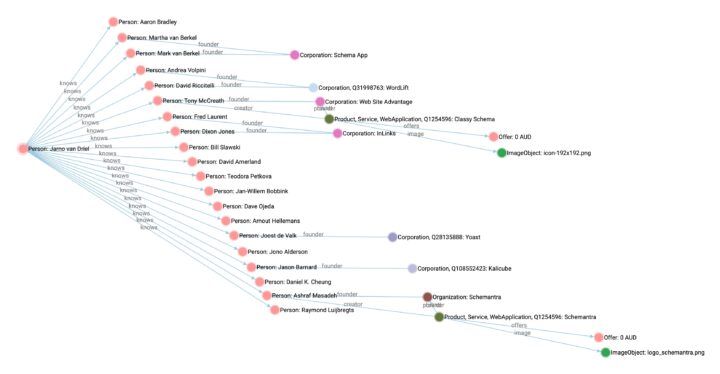
4.4 R (Remain) skeptical until statements have been verified
Now even though I consider these people to be my peers, you should not take my word for it.
Always make sure to look beyond what it is that is being told to you until you find independent, and what you feel resembles reliable, confirmation of statements that have been made.
Which in my case will probably be the uncovering of my repeated participation throughout the years in webinars (and for those that remember them, Hangouts) with many of the same people I mentioned above. Facts, all of which would have been much easier to substantiate by me, to you if Google Plus still had been around. So take the following as a warning…
4.5 D (Do) not put all your eggs in one basket!
A type of reasoning search engines try to mimic through some of their algorithmic processes.
Most notable being that they do not trust many of the statements made by the same people or organizations that are the topic of those statements, unless confirmed through multiple web resources in/at different domains and (if available) within multiple forms of resources. The latter of which might (for example) be a not fully publicly accessible resource.
A type of behavior that sometimes strongly contributes to what seems to be a strange loop of bidirectionally imposing factitious disorder on another by all entities involved.
In short: search engines do not trust many of the statements you make about yourself unless they can confirm these by proxy!
Statements, of which it does not matter whether these are expressed via natural language, link graphs, and/or the knowledge graphs your content contains (facts which you maybe hope Google’s knowledge graph one day will contain).
Something that should be seen as a stimulation for doing the right thing by creating (and curating) meaningful, deductive, and computational facts and relations, throughout the web, that lead to useful results for people. As Jason Barnard and Kalicube have been successfully demonstrating for years now. And – in case you are not – to whom you should be paying attention to what it is they do and specialize in.
5. T (Trustworthiness), the proof should be in the pudding
Trust should never be solely based on statements made by any single character (person or business), especially if these statements are made within the content of a single page (like this one).
So it should be obvious to you by now that me simply making statements about my, supposed, 25+ years of online activities, 15+ years of trying to figure out the value of the application of the semantic web, 10+ years of being occupied with/participating in schema.org, as well as mentioning some of the more well-known people in our niche and suggesting I hang around with them:
Does not and should not prove a single thing!
5.1 “B (But) I’m a geek. I’m a weirdo. What the hell am I doin’ here? I don’t belong here”
Misquoting Creep (by Radiohead) to express how I have often thought about myself throughout my career probably illustrates my sentiments best…
Only those who have known me for many years are aware of the fact I thrive by being spontaneous, curious, gullible, humble, transparent, and fallible yet persistent; and that I would never dare to act like I am a thought leader of sorts. It is something I always have been and will be avoiding like the Plague. Just the thought of it scares the living 0123 out of me because of the fact there will always be people who forever will know infinitely more about certain topics than I ever will.
Types of personality traits, thoughts, feelings, and emotions, that are not always a positive thing to have in our industries. Especially when you are trying to break into the upper echelons by publishing something and as a result of that effort accidentally, unintentionally, and/or naively step onto the toes of, some of, the powers that (currently) be.
So instead of performing a false and pretentious act, by trying to convince you I am more knowledgeable, experienced, and effective than those you already know (possibly at their expense, most definitely at the expense of my character), I prefer to stay as close to who I truly am, just a person, by showing you some of what I have been up to in co-operation with people who help me* to be – without disguise.
* People whom I will not all mention by name here as this story has not finished yet and still has a ways to go. I invite you to sift through the search results, read posts, learn like I did, and get to know some amazing and thought-provoking people during that process.
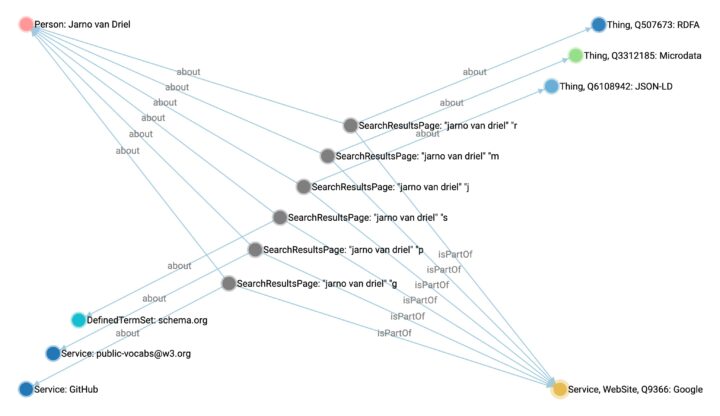
5.2 T (This), what my pudding is made of
- “jarno van driel” “rdfa” – Google Search (for me: 262 results),
- “jarno van driel” “microdata” – Google Search (for me: 326 results),
- “jarno van driel” “json-ld” – Google Search (for me: 462 results),
- “jarno van driel” “schema.org” – Google Search (for me: 1110 results),
- “jarno van driel” “[email protected]” – Google Search (for me: 371 results),
- “jarno van driel” “github” – Google Search (for me: 235 results).
6. T (Transparency), Part 1 – “More than meets the eye!”
The prologue of this story was intended to be sufficiently insinuating, for you not to be surprised to discover my act of suggesting that Google should aim a spotlight at the character of T (Transparency) and add it to their acronym; while you act on it before they do, because it really matters to people!
Although this statement does come with an additional annotation:
I (strongly) feel Google should do so while also transforming the acronym into a union of the concepts it entails (although, who is to say whether the machines have not already started doing so, possibly even inspired by Primus instructed by Primus).
A union of which I hope they – do not – try to explain to people through just another new acronym (E-E-A-T-T) but by expressing it through their version of my, hopefully illustrative enough, union of {cinematics}, {mathematics}, {phonetics}, {narratives} and {rhetoric}…
With the Generation 1 intro out of the way, let us jump ahead to the Dark of the moon (the math):
C ({E,E,A,T}) ∈ M ({T} ∪ {E,E,A,T})
Which breaks down into:
functional Concepts to ({E,E,A,T}) ≈ /iːt/ = eat = an imperative mood
∈ = an element of, highly functional
Meals ({T} ∪ {E,E,A,T}) ≈ /tu iːt/ = to eat = an invitation
for a {{TE},{TE},{TA},{TT}} ≈ /teɪt.əˈteɪt/ = tête-à-tête.
Together with others but sometimes also with yourself, to change the state you are in. Or to express it as the 11-year-old inside me desperately wants to shout out loud – with a commanding and robotic voice:
“{E,E,A,T}, transform and roll out!, {T}, join them and combine into a super robot. As Notatron you are a force that channels and projects true resonance!”

Without the union of the concepts, neither can be truly expressed nor experienced. Not by people, nor by machines, because it is what we take note of during tête-à-têtes that resonate.
7. N (Notability), the pot of worthiness at the end of the rainbow
Notatron is the entity most people are chasing rainbows for! Although, there will always be those who will insist you should serve Megatron instead.
Whomever you decide to listen to, the reality is that in the digital universe, our being ‘worthy of notice’ is something we mostly try to convey to and through machines, so that they provide us with the visibility we need; in an attempt to convey our ‘worthiness’ to people; in the hopes that they notice and join us, satisfying our aligning interests.
This implies that I should probably also try to capture some sort of a description for achieving our mutual and most desired status:
Notability = True
A state my ‘mathephonatical’ projections led me to conclude there is a high probability that:
N is a derivative of function ({T} union {E,E,A,T})
Or to boil it down into its essence:
N′({t} ∪ {e,e,a,t}) ≈ /nɒt tuː iːt/ = not to eat.
Meaning: Notability is something to be derived, not to (e)eat(t).
In abstract: Notability is not a character to be played, nor a dish to be prepared and consumed alone. Instead, it is something to be derived together; from the depths of (public) stories, the insights and experiences exchanged through these, and how they resonate within (groups of) people. The stuff making up that which we consume, digest, and experience.
Something we derive from, what should be, open-minded conversations over wonderful meals we enjoy together. Ones that are full of mouth-watering smells and flavors, because they have been prepared with beautiful ingredients. Ones that nourish, satisfy, and help us grow, enabling us to achieve our goals.
Things I call really ‘neat’, thus dropping any need for having to ∞ invent new acronyms.
8. T (Transparency), Part 2 – The coming of Notatron
I absolutely infinitely felt an Ω strong hesitation to include the concept of notability, even up until and into the act of creating chapter 6. Not because I do not have much of such a thing, but because of its, generally, applied interpretation by people and business. One that many of us seem to require and use during our work:
Absolute popularity, defined through just numbers.
Which, in part, finds its origin in:
The limited definition provided and used by Wikipedia. Which somehow, unawarely, ended up being part of the foundation of how many of us perceive, measure, and report Notability’s impact. One that is crooked because it misses many (important) relative nuances.
The utilization of absolute numbers which, for the most part, have been provided to us by the creators of the machines we use, 3rd party data providers, and numbers originating from people’s businesses.
Implying that how people perceive the position of notability is greatly determined through theories and statistics that predefine its cat-like state ↦ the reason for my hesitation. Which is based on my belief that notability, per niche and in large part, is based on relative indicators. And that interpreting reality through absolute results alone means you are short-selling yourself and/or your business.

My position is that Value = True can only be found in the long run, with a lot of hard work, yet not until after – a relative handful of – meaningful, yet near impossible to predict and explain serendipitous events have taken place.
The results of which can only sometimes, but not always, be recognized and labeled long after they manifested themselves and became part of history, and the future; without you (or machines) being able to reason about let alone envision them. Leaving you scratching your head, wondering how the heck something caused something in the physical world to happen.
8.1 N (Notability), the sleeping force awakens
I contemplated that including the concept of notability might result in introducing a contradictory and sleepy character because of my convictions versus {vs}, the part Notability might have needed to play so that it would have stayed relevant and relatable to you in regards to how you maybe perceive and act on it during your professional activities.
Luckily, for the characters of both Notatron and Notability, it was Jason Barnard who argued with me that:
“Google’s grasp of notability is significantly more granular and based on niche cohorts rather than sweeping generalities”.
It is just really, really, really hard to measure and substantiate in numbers unless its impact abundantly reveals itself.
Meaning machines do not derive notability just from absolute popularity alone but also from some form of relative notability. Extrapolated through the (projected) resonance of somebody or something within a niche by using aggregated profiles of the groups of audiences (cohorts) related to a niche; circumventing the need for large and simple numbers based on individuals.
This likely also explains why it is so difficult for them to produce any real numbers of a single domain for us ↦ Ground I needed to conclude that Notability is a character who deserves to have an active part in this story ↦ The reason for having Notatron resonate the character into an awakened state.
However, this understates the fact Notability absolutely is – the leading character – as it represents that which we all hope to achieve:
Being worthy of being noticed by others.
And so I hope its role will have a meaningful impact on how you go out and about when contemplating, interpreting, acting on, and reporting about it; until long after you have digested my story for you.
8.2 The S (Story) has ended, the curtain closes…
9. TL;DR (Too Long; Did Read), the epilogue of a story that will have to be continued
Anything and everything you have read in this story has been captured and translated into JSON-LD and microdata statements embedded in this page.
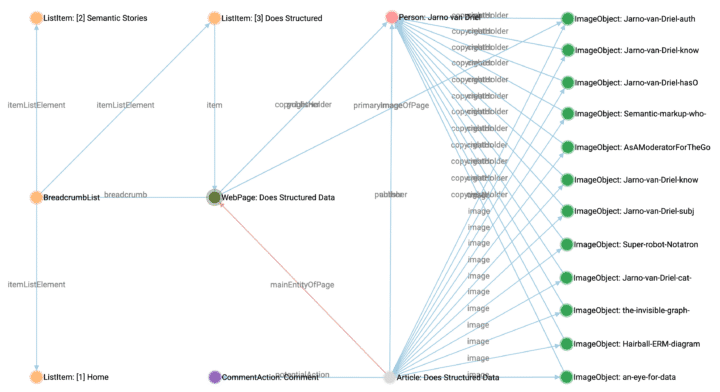
The graph I wrote contains 7.447 statements – which should give Jono Alderson a run for his money. (Do you hear me “mate”? I do not want to hear about your markup until you manage to top this one. 😉)
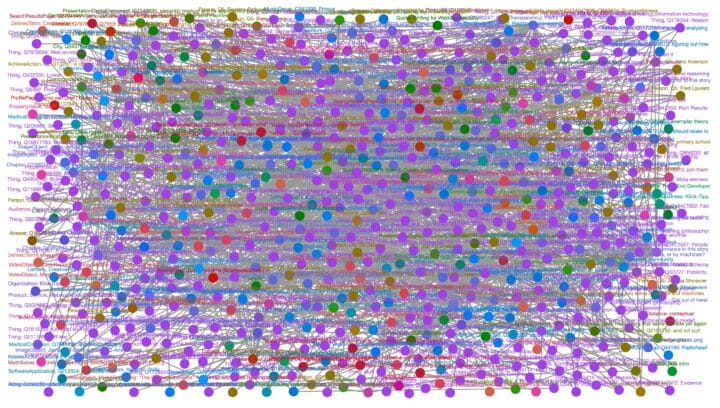
One dynamic graph that was generated through the CMS this website has been built on, and one static graph I wrote manually. Two graphs that at the end were chained together…
Megatron: “Because there can be Only One!”
“Only One”… Dude, seriously, what is wrong with you?
I meant linked, not decapitated!
Now go bother Starscream and the rest of the Decepticons, this story has come to an end.
…as no rich story exists in isolation (and neither should knowledge graphs).
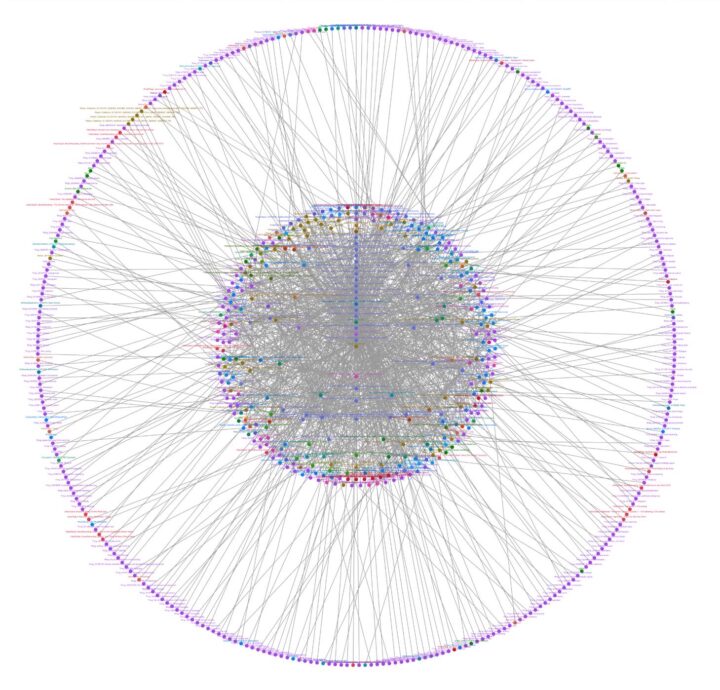
9.1 M (My) knowledge graph ⬇️, the bulk of which was written before this story
A statement that will probably have you wondering why on earth I would do such a thing. In case of which you might be interested to know that this is not a methodology I came up with by myself.
Having worked with and for professionals like journalists, photographers, directors, designers, artists, animators, and business development specialists made me aware that many of these types of professionals often tend to create some sort of abstract, decision tree, and/or storyboard in preparation of the creative work they are about to produce. A technique (or form thereof) which is also used by many writers specializing in accessibility.
9.2 R (Reasons) for this process and the results of the actions following it
Are that if you separate the process of imagination from the act of creation its parts, most of the time, tend to be better structured, more informative, less ambiguous, and of a higher degree of accuracy, as opposed to when you simply start creating something on the fly, based on, a vague concept of, some Thing you want to publish (about).
In my particular case, writing JSON-LD + schema.org markup is my preferred method for performing such acts, while its outcome represents a shortcut for describing the desired results:
Publication of content that has been enriched for people, as well as the structured data markup describing it, in the shortest amount of time possible.
9.3 O (Outcome) of my performance in this story
Should be that less than 5% of the semantically annotated things, that matter to this story, are missing in the on-page content, as well as – the other way around – less than 5% of the things I mentioned in my story are missing from the structured data markup.
Theoretically making the embedding of my graph an obsolete act for trying to achieve great search engine results, as NLP (Natural Language Processing) should be able to extract the same concepts, entities, and facts.
9.4 I (me) said “should”, and not the usual “it depends”
If you run this story through (for example) tools like ChatGPT and Bard and have these create the JSON-LD + schema.org markup for this page based on its full content, you will find they do not come close yet to expressing the things I have expressed.
In (large) part because the machines have not been trained on great amounts of expressive markup – yet, because there – still – is not enough truly expressive markup out there for them to be trained on.
And vice versa, because of the current state of affairs, such tools are not able to generate the same type of story from the markup they have been trained on yet either. Meaning the conclusion, for now, is that machines still require us to continue training them, while we keep on evolving ourselves!
9.5 T (Things) for you to consider…
If you decide to trust machines to create content for you there is still a very high probability their results will not be of high enough quality to satisfy the needs of people.
Machines have not arrived at the point yet where they can consistently demonstrate they are truly neat and do our jobs for us. They can only help us (I for one would be lost in limbo forever without a spell-checkre, search egnines, or even just Wikkpdeia for that matter).
And they are also not capable enough yet to extract and translate all the information, nuances, and relations we as people can perceive and express. Let alone being able to reason about that which we experience!
Machines have come really far and their potential seems to be growing exponentially by the minute. Yet even though they are helping us, with things we could have only dreamt of just a short time ago, they still need people. Though likely never to the same extent as “people will always need people”…
“42” (The Answer to the Ultimate Question of Life, The Universe, and Everything), both philosophically and psychologically, is something that has not yet been defined nor inflected by machines! A trap we continuously seem to be falling into. It still comes from us and is for us. To create, to evolve, to express, and to experience! Constantly and never-endingly!
∞ TBC (To-Be-Continued), by you or by machines?
10. A (Acknowledgement) of my enablers and a Thank You to them
Just by myself, I would have never found the courage to write my first attempt at (ahem) a short story about an FAQ (Frequently Asked Question). One that would have never made it past its conceptualization, if it had not been for these 6 people:
Carla Figueiredo (my better half), for being nothing less than supportive of my attempts at creating my composition, enduring my lack of presence while I was occupied with my processes and acts of imagination, deliberation, contemplation, and creation,
Arnout Hellemans, for being the pebble in my shoe, thus forcing me to start dancing,
Teodora Petkova, without whose meaningful learnings, mommy tantrums, and tilting at windmills this work would not have had its “jazzy flow”,
Jono Alderson, who kept the rhythm, thus trying to stop me from going off-beat too much or too little,
Jason Barnard, with whom I have been flipping coins, calling heads or tails, while trying to find the “gray middle” so we can learn how to perform a show together,
Raymond Luijbregts (@rluijbregts), who made sure my high notes and punctuations were not (too much) off-key.
11. PS (Post Scriptum), for You
Did I succeed in persuading you to trust I am not just blowing some fiction up your [redacted]?
If True, then trust me when I say to you, do as I say, not as I do, by creating over-the-edge knowledge and link graphs as I did for this story, and you.
The results of my performance in the acts are intended to be creative works themselves. Ones that are part of my geeky attempt at an artistic expression. Ones that have many reasons for their existence but none of these include the illusion that my graphs are a meal search engines would like to be served at a web scale.
They can only consume so much until they also start experiencing the effects of digestive disorders! As if hallucination was not enough already. Poor, poor, poor machines.
A reality that also applies to the amount of hyperlinks this story contains. These links are all part of the story for you so that you can expand your horizons in a non-linear manner, for as far and as long as you want to travel, whenever you want, and wherever it is these journeys may lead you to.
So please, do not sell yourself short by skipping over things you presume you already know and fully understand, as many of the resources I referred to lead to a near ∞ number of new rabbit holes to go down into…
just Jarno
This is absolutely INSANE. This what Roman people meant when they coined latin phrase “magnum opus”. I feel Google should rank you #1 for “Structured data” and “EEAT”
I appreciate the sentiment but I highly doubt it will be that easy for those ‘key’ words. Especially for a new blog like this one. Glad to hear you appreciate the story though.
Love this ! Bookmarked and shared with my team 🙂 Keep writing, for gods sake !
🫡
Although, if humans read this entire post without clicking a single link you included “for people,” then the links aren’t really useful for people. Only for machines. And thus, SEO continues to prioritize doing things for machines and not humans.
I do not think you will find anybody out there who believes that adding this amount of links to a story is particularly beneficial for SEO, nor anybody who believes that everybody will follow any number of them.
Part of the reason behind all those links is to help those who do not know or fully understand some of the entities and concepts contained within the story, as well as those who are interested to know more. The links are a method for allowing people (and search engines) to obtain additional information (= improving accessibility).
However, since I do not expect everybody to have the desire to read the full story behind every link, even though they might be curious about (some of) them, I decided to add a link preview feature (= improving usability).
After all, a little bit of information goes a long way (= showcasing data interoperability).
Though you should know that the ridiculous amount of links and schema markup are also there to serve as a warning:
There is no need to describe every entity and concept for SEO!
For SEO, the ‘rule’ is that anything described via semantic annotations should be present in the actual content – for people to consume.
This means that anybody who thinks about describing every single entity and concept via
Thing.sameAsorDefinedTerm, should be aware that these amounts of links,<abbr>elements and text descriptions should be part of such an effort as well – yet will not necessarily lead to any improvements in search.The point of publishing of structured data markup for search is:
For 80% of the websites out there it suffices to stick to Google’s documentation as anything undocumented will most likely be ignored by it. Unless enough websites start doing the same thing (that equals to a new and valuable information pattern), than it might serve as inspiration for search engine engineers.
For the other 20% goes that there are often very specific reasons for going beyond Google’s documentation. Examples of this are: Organizing an organization’s knowledge base and/or unlocking information contained within customer service ticket systems for ‘smart’ chat bots, or feeding information back into a publisher’s analytical systems as a data source for business intelligence, marketing and/or financial insights…
…and then there are those, like myself, who have artistic and/or educational reasons for wanting to create a knowledge graph, so that others can do whatever they want with it, like, for example, turning it into a navigationable data repository, as Kingsley Idehen did.
And lastly, there’s also the idea behind Hypertext fiction, which served as inspiration for both the structure of and links in the story:
And in your case, I am happy it led you to leaving a comment on my story, as it gave me an excuse to dive into the reasons why things are the way they are.
WOW, not many articles make me giggle, literally emotional with wet eyes. I needed this today. I have OCD. Thank you to Gary Paulson for sharing this with me. I’m going to share this in my Facebook Group right now!